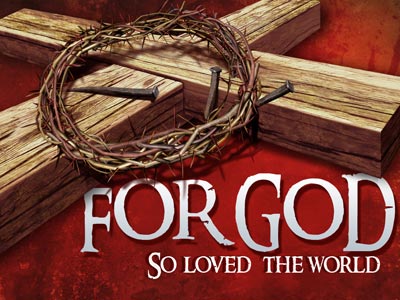-
Looking At Our Mess And Hopelessness, Where Was Jesus? Series
Contributed by Jim Butcher on Jan 24, 2024 (message contributor)
Summary: The phrase "in the middle" appears early in Genesis, late in John, and late in Revelation. The connection between the three speaks to an amazing title for the cross of Jesus.
“Looking at Our Mess and Hopelessness, Where Was Jesus?”
Genesis 2:4-9
- [There is a verse that needs to be quoted in the outline.]
SERIES SET-UP: There are significant parallels between the beginning of Genesis and the end of John.
- Genesis 1:1; John 1:1.
- Romans 8:19-22.
- This is not something I have ever really studied out before but when you get into it, there are several interesting parallels. Over the next few weeks leading up to Easter we are going to look study through them.
- Although I want to focus on the end of John, it’s telling for us to start by looking at the opening verses of Genesis and John.
- This sermon series is titled “Re-Creation.” Obviously in Genesis we have the story of creation right there at the beginning, but we also have the story of the Fall in chapter 3. Things go south quickly. But God doesn’t give up on creation and humanity. He begins the long and difficult process of redeeming creation and humanity.
- We see this in Romans 8:19-22, where it speaks of how the Fall of humanity impacted creation itself.
- So over the next few weeks we are going to talk about these parallels and what they teach us about what Jesus accomplished.
A BIG QUESTION: Why is there evil in the world?
- This is, in many ways, the greatest question. It’s the one that most people would ask God if they were only allowed to ask Him one question.
- The overall point of the sermon this morning is going to directly answer that question.
- This is a subject that innumerable books down through the years have attempted to answer. Let me offer a simplified version of some of the major answers:
a. Suffering is an illusion.
- This is an answer that some of the Eastern religions take.
- Let’s take Buddhism.
- The Four Noble Truths in Buddhism are: all of life is suffering; the cause of suffering is craving; the end of suffering is getting rid of craving and grasping; follow the Eightfold Path to make that happen.
- Knowledge brings an end to suffering in part because you realize there is no permanent world and no permanent self. If suffering is caused by desire but then you realize that there is neither a self or world to be grasped, then you see that suffering is an illusion.
- So one take is to look at the evil and suffering in the world and say they are illusions.
- I think this is a terrible idea, but there are many who buy it.
b. God is both good and evil.
- Another option is that the good and evil in the world is a direct reflection of the nature of God. Maybe He’s both good and evil.
- Related to this is the idea often found in more primitive cultures that there are multiple gods warring against each other – some are better and some are worse and so we end up with the mess we see around us.
- Of course, this creates major problems just like the first option. In this case, do I want to trust and live for a God who is not entirely trustworthy and good?
c. Evil came from mankind’s choice.
- A third option argues that suffering is real but also that God is entirely good. If that’s true, then where did evil come from? Evil came from mankind’s choice not to trust and obey God.
- This is what the Bible teaches us about where evil comes from. Evil is real and suffering is real. God is not half and half but is wholly good. But humanity opened the door to evil in the world.
- I think this is by far the best option and as we get into the passages for this morning I’ll try to show what we are taught about God responding to what we’ve done.
TWO TREES: There are two trees “in the middle” – one speaks of the danger of disobedience and one speaks of the beauty of life.
- Genesis 2:9, 16; Genesis 3:5, 22.
- Let’s get into the phrase I want to look at this morning that connects the beginning of Genesis and the end of John. The phrase is “in the middle” and it appears in v. 9. The trees were “in the middle” of the garden.
- Let’s talk about these two trees:
a. The tree of the knowledge of good and evil.
- Humanity was not created fallen. No, it was our choice to disobey God’s commands that created that situation.
- Verse 16 tells us of the warning that God gave.
- It’s probably worth stopping here and asking a question that’s on some of your minds: why not just take away the choice and therefore the chance of a fall? For me, the most important answer to that question is that for love to be genuine, there has to be a choice not to love. If a little girl’s doll has a string into its back and you pull it and it says, “I love you,” that means nothing because it has no choice. That’s all it can do. There has to be an opportunity to not love for any love given to be worthwhile.

 Sermon Central
Sermon Central



